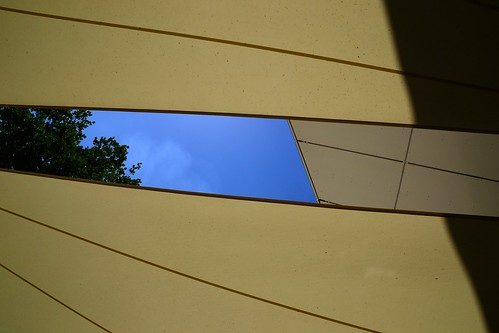y components has occurred at differing rates. For 1R and 2R, the overall `expansion ratio’ was 1:4 for the JAK and PIAS families and 1:3 for the STAT and SHP. The expansion ratio for the SOCS family overall was 1:2, although this ranged markedly between sub-families: from 1:4 for SOCS1/SOCS2/SOCS3/CISH, 1:2 for SOCS4/SOCS5, and 1:1 for SOCS6 and SOCS7. For 3R, the expansion was more modest and differentially focused, being 1:1.5 for the SOCS family, 1:1.33 for the STAT family, 1:1.25 for the JAK family and 1:1 for the SHP and PIAS families. Indeed, the majority of JAK-STAT pathway components are represented at a 1:1 homolog ratio between tetrapods and teleosts. The encoded set of core signaling molecules are therefore Ridaforolimus likely to display the highest functional conservation across these organismal groups. The differential expansion of the individual JAK-STAT pathway  components would not seem to be a random process, but instead linked to specific signaling ��modules”. The key factor appears to be the diversification of upstream cytokine receptors, which expanded.30-fold during 1R and 2R but with much more limited expansion during 3R, consistent with the relative expansion of JAK-STAT pathway components. Specific evidence for the role of cytokine receptor expansion in the process comes from analysis of the SOCS family, with the subset predominantly involved in regulating cytokine signaling expanding 4-fold during 1R and 2R, the subset with lesser roles expanding to a reduced extent, and the subset with no known role in cytokine signaling not expanding at all. Duplicate retention of JAKSTAT components along the teleost lineage also strongly correlates with expansion of the corresponding cytokine receptors, such that entire pathways are seen to be replicated. For example, duplicates of both prolactin receptor and growth hormone receptor are found in teleosts, as are the genes encoding the JAKSTAT components lying downstream of these receptors. Similarly, Class II receptors have expanded along the teleost lineage, as have the genes encoding STAT1 and its specific negative regulator PIAS1, that lie downstream of this group of receptors. Interestingly, the expansion of cytokine receptors has significantly exceeded that of the downstream JAK-STAT pathway. However, the latter are pleiomorphic, being able to form distinct `signaling modules’ by combining different components. For example, JAK2 can differentially activate STAT1, STAT3, STAT6 and/or STAT6 depending on the receptor context, while negative regulators are able to act on multiple receptors, JAKs and STATs, including the ability to cross-talk between different receptors. Therefore the overall functional complexity of both extracellular and intracellular signaling has probably increased to a similar extent. Furthermore, the relative rates of evolution for JAK-STAT components is different for those which are largely immune restricted compared to those that are more pleiotropic . Consistent with a previous study, the higher dN/dS ratios of the immune restricted components reflect a greater evolutionary rate of change and lower purifying selection than the more pleiotropic components, PubMed ID:http://www.ncbi.nlm.nih.gov/pubmed/22189973 Evolution of JAK-STAT Pathway Components likely due to the constant need to respond to the ever changing pathogenic threats that the immune system encounters. Finally, this study provides evidence that diversification of cytokine receptor signaling through JAK-STAT pathway components has contributed to the emerge
components would not seem to be a random process, but instead linked to specific signaling ��modules”. The key factor appears to be the diversification of upstream cytokine receptors, which expanded.30-fold during 1R and 2R but with much more limited expansion during 3R, consistent with the relative expansion of JAK-STAT pathway components. Specific evidence for the role of cytokine receptor expansion in the process comes from analysis of the SOCS family, with the subset predominantly involved in regulating cytokine signaling expanding 4-fold during 1R and 2R, the subset with lesser roles expanding to a reduced extent, and the subset with no known role in cytokine signaling not expanding at all. Duplicate retention of JAKSTAT components along the teleost lineage also strongly correlates with expansion of the corresponding cytokine receptors, such that entire pathways are seen to be replicated. For example, duplicates of both prolactin receptor and growth hormone receptor are found in teleosts, as are the genes encoding the JAKSTAT components lying downstream of these receptors. Similarly, Class II receptors have expanded along the teleost lineage, as have the genes encoding STAT1 and its specific negative regulator PIAS1, that lie downstream of this group of receptors. Interestingly, the expansion of cytokine receptors has significantly exceeded that of the downstream JAK-STAT pathway. However, the latter are pleiomorphic, being able to form distinct `signaling modules’ by combining different components. For example, JAK2 can differentially activate STAT1, STAT3, STAT6 and/or STAT6 depending on the receptor context, while negative regulators are able to act on multiple receptors, JAKs and STATs, including the ability to cross-talk between different receptors. Therefore the overall functional complexity of both extracellular and intracellular signaling has probably increased to a similar extent. Furthermore, the relative rates of evolution for JAK-STAT components is different for those which are largely immune restricted compared to those that are more pleiotropic . Consistent with a previous study, the higher dN/dS ratios of the immune restricted components reflect a greater evolutionary rate of change and lower purifying selection than the more pleiotropic components, PubMed ID:http://www.ncbi.nlm.nih.gov/pubmed/22189973 Evolution of JAK-STAT Pathway Components likely due to the constant need to respond to the ever changing pathogenic threats that the immune system encounters. Finally, this study provides evidence that diversification of cytokine receptor signaling through JAK-STAT pathway components has contributed to the emerge
